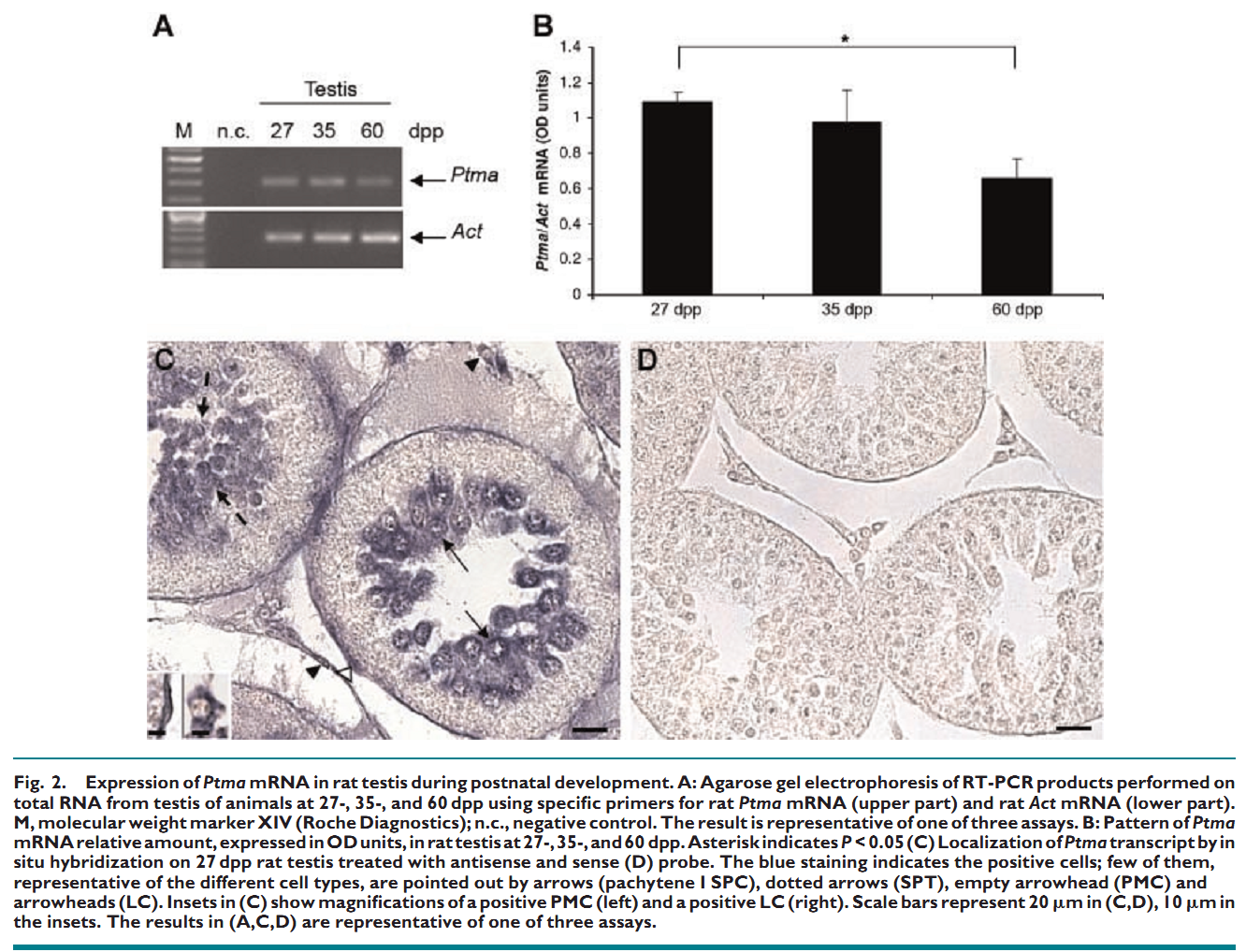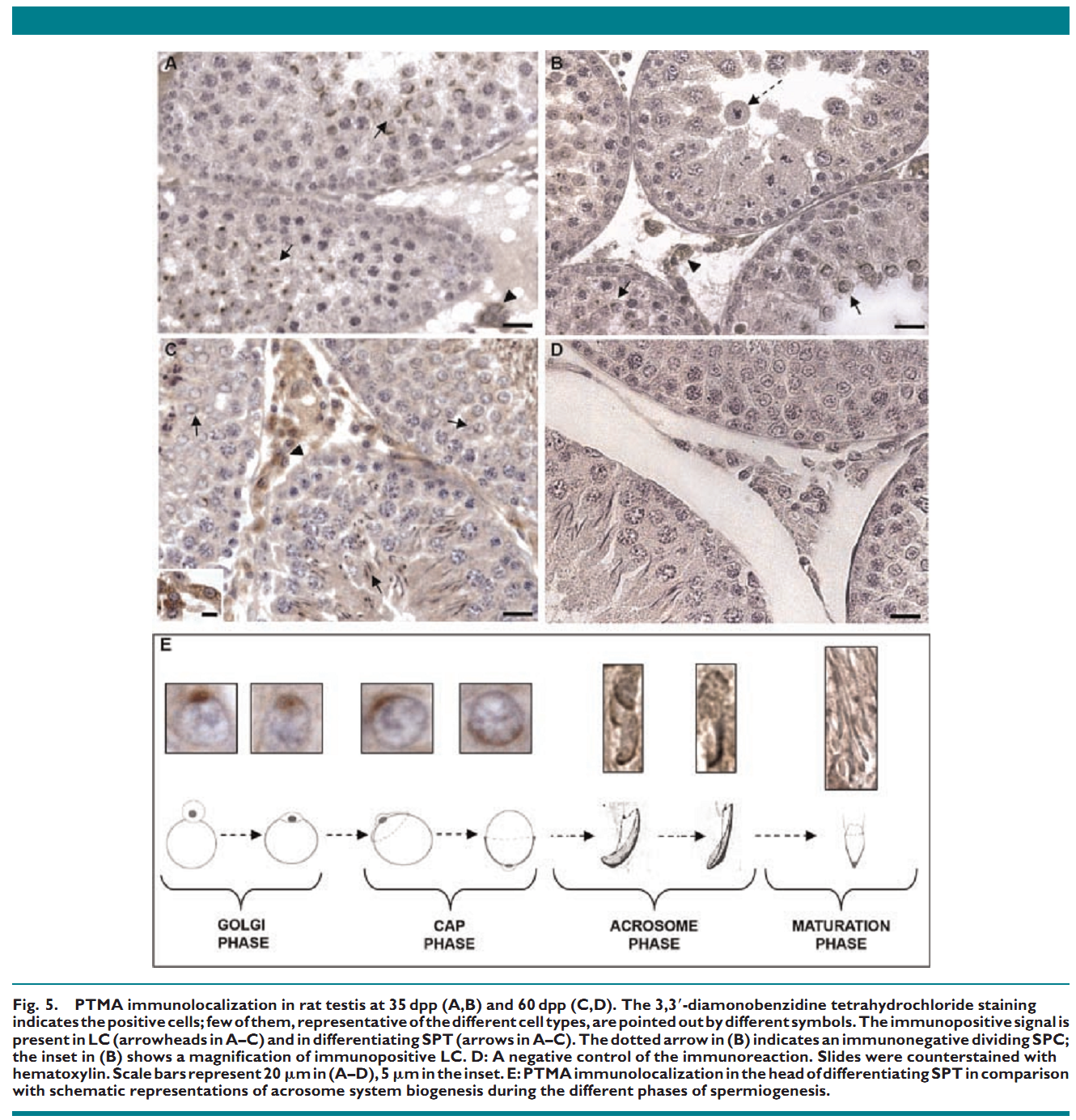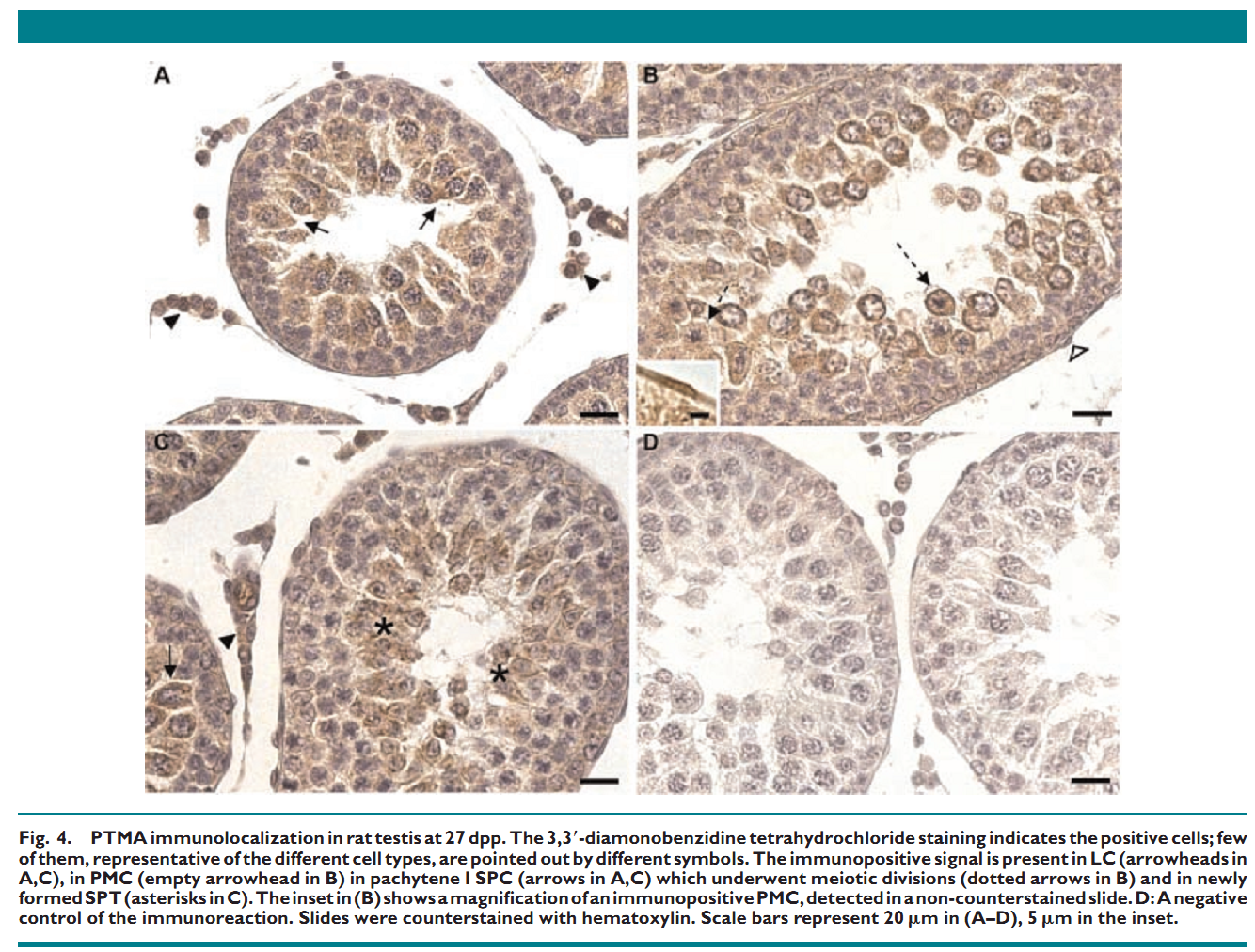| Tag | Content | ||||||||||||||||||
|---|---|---|---|---|---|---|---|---|---|---|---|---|---|---|---|---|---|---|---|
SG ID |
SG00002006 |
||||||||||||||||||
UniProt Accession |
|||||||||||||||||||
Theoretical PI |
4.25
|
||||||||||||||||||
Molecular Weight |
12382 Da
|
||||||||||||||||||
Genbank Nucleotide ID |
|||||||||||||||||||
Genbank Protein ID |
|||||||||||||||||||
Gene Name |
Ptma |
||||||||||||||||||
Gene Synonyms/Alias |
|||||||||||||||||||
Protein Name |
Prothymosin alpha Thymosin alpha |
||||||||||||||||||
Protein Synonyms/Alias |
Contains: |
||||||||||||||||||
Organism |
Rattus norvegicus (Rat) |
||||||||||||||||||
NCBI Taxonomy ID |
10116 |
||||||||||||||||||
Chromosome Location |
|
||||||||||||||||||
Function in Stage |
|||||||||||||||||||
Function in Cell Type |
|||||||||||||||||||
Description |
Temporarily unavailable |
||||||||||||||||||
The information of related literatures |
1. D. Ferrara, G. Izzo, P. Pariante, A. Donizetti, M. d'Istria, F. Aniello and S. Minucci (2010) Expression of prothymosin alpha in meiotic and post-meiotic germ cells during the first wave of rat spermatogenesis. J Cell Physiol 224(2): 362-8. Abstract Prothymosin alpha (PTMA) is a highly acidic small polypeptide, that is, widely distributed and conserved among mammals. Its possible involvement in male gametogenesis has been mentioned but not clarified yet; in particular, it has been suggested that, in non-mammalian vertebrates, it could play a role during GC meiosis and differentiation. In the present work we investigated the possible association between PTMA and meiotic and post-meiotic phases of mammalian spermatogenesis. Three different time points during postnatal development of rat testis were analyzed, that is, 27 dpp (completed meiosis), 35 dpp (occurring spermiogenesis), and 60 dpp (first wave of spermatogenesis definitely ended). RT-PCR and Western blot analyses showed that the expression levels of both Ptma mRNA and corresponding protein decrease in total extracts from 27 to 60 dpp. The in situ hybridization localized the transcript in interstitial Leydig cells, peritubular myoid cells and, inside the tubules, in germ cells from pachytene spermatocytes to newly formed haploid spermatids. The immunohistochemistry analysis localized the protein in the same cell types at 27 dpp, while at 35 and 60 dpp the haploid cells remain the only germ cells that still express it. In particular, PTMA specific localization in the heads of spermatids and epididymal spermatozoa, associated with the acrosome system, supports for the first time the hypothesis of a direct function in male germ cells. PMID: [20432433] Back to Top |
||||||||||||||||||
Figures for illustrating the function of this protein/gene |
|
||||||||||||||||||
Function |
Prothymosin alpha may mediate immune function byconferring resistance to certain opportunistic infections. Back to Top |
||||||||||||||||||
Subcellular Location |
Nucleus. |
||||||||||||||||||
Tissue Specificity |
|||||||||||||||||||
Gene Ontology |
|
||||||||||||||||||
Interpro |
|||||||||||||||||||
Pfam |
|||||||||||||||||||
SMART |
|||||||||||||||||||
PROSITE |
|||||||||||||||||||
PRINTS |
|||||||||||||||||||
Created Date |
18-Oct-2012 |
||||||||||||||||||
Record Type |
Experiment identified |
||||||||||||||||||
Protein sequence Annotation |
INIT_MET 1 1 Removed. CHAIN 2 112 Prothymosin alpha. /FTId=PRO_0000299253. PEPTIDE 2 29 Thymosin alpha. /FTId=PRO_0000029867. COMPBIAS 42 101 Asp/Glu-rich (acidic). MOD_RES 2 2 N-acetylserine. MOD_RES 2 2 Phosphoserine (By similarity). MOD_RES 8 8 Phosphothreonine (By similarity). MOD_RES 9 9 Phosphoserine (By similarity). MOD_RES 10 10 Phosphoserine (By similarity). MOD_RES 13 13 Phosphothreonine (By similarity). MOD_RES 14 14 Phosphothreonine (By similarity). MOD_RES 15 15 N6-acetyllysine (By similarity). MOD_RES 108 108 Phosphothreonine (By similarity). Back to Top |
||||||||||||||||||
Nucleotide Sequence |
Length: 797 bp Go to nucleotide: FASTA |
||||||||||||||||||
Protein Sequence |
Length: 112 bp Go to amino acid: FASTA |
||||||||||||||||||
The verified Protein-Protein interaction information |
| ||||||||||||||||||
Other Protein-Protein interaction resources |
String database |
||||||||||||||||||
View Microarray data |
Temporarily unavailable |
||||||||||||||||||
Comments |
|||||||||||||||||||


